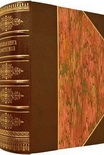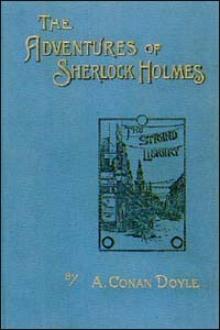My Autobiography, Charles Chaplin [books to read in your 20s .TXT] 📗

- Author: Charles Chaplin
Book online «My Autobiography, Charles Chaplin [books to read in your 20s .TXT] 📗». Author Charles Chaplin
At the end of the day when I went to the dressing-room, Ford Sterling and Roscoe Arbuckle were taking off their make-up. Very little was said, but the atmosphere was charged with crosscurrents. Both Ford and Roscoe liked me, but I frankly felt they were undergoing some inner conflict.
It was a long scene that ran seventy-five feet. Later Mr Sennett and Mr Lehrman debated whether to let it run its full length, as the average comedy scene rarely ran over ten. ‘If it’s funny,’ I said, ‘does length really matter?’ They decided to let the scene run its full seventy-five feet. As the clothes had imbued me with the character, I then and there decided I would keep to this costume whatever happened.
That evening I went home on the street-car with one of the small-bit players. Said he: ‘Boy, you’ve started something; nobody ever got those kind of laughs on the set before, not even Ford Sterling – and you should have seen his face watching you, it was a study!’
‘Let’s hope they’ll laugh the same way in the theatre,’ I said, by way of suppressing my elation.
*
A few days later, at the Alexandria Bar, I overheard Ford giving his description of my character to our mutual friend Elmer Ellsworth: ‘The guy has baggy pants, flat feet, the most miserable, bedraggled-looking little bastard you ever saw; makes itchy gestures as though he’s got crabs under his arms – but he’s funny.’
My character was different and unfamiliar to the American, and even unfamiliar to myself. But with the clothes on I felt he was a reality, a living person. In fact heignited all sorts of crazy ideas that I would never have dreamt of until I was dressed and made up as the Tramp.
I became quite friendly with a small-bit player, and each night going home on the street-car he would give me a bulletin of the studio’s reactions that day and talk of my comedy ideas. ‘That was a wonderful gag, dipping your fingers in the finger-bowl, then wiping them on the old man’s whiskers – they’ve never seen that kind of stuff around there.’ And so he would carry on, having me stepping on air.
Under Sennett’s direction I felt comfortable, because everything was spontaneously worked out on the set. As no one was positive or sure of himself (not even the director), I concluded that I knew as much as the other fellow. This gave me confidence; I began to offer suggestions which Sennett readily accepted. Thus grew a belief in myself that I was creative and could write my own stories. Sennett indeed had inspired this belief. But although I had pleased Sennett I had yet to please the public.
In the next picture I was assigned to Lehrman again. He was leaving Sennett to join Sterling and to oblige Sennett was staying on two weeks longer than his contract called for. I still had abunddant suggestions when I started working with him. He would listen and smile but would not accept any of them. ‘That may be funny in the theatre,’ he would say, ‘but in pictures we have no time for it. We must be on the go – comedy is an excuse for a chase.’
I did not agree with this generality. ‘Humour is humour,’ I argued, ‘whether in films or on the stage.’ But he insisted on the same rigmarole, doing what the Keystone had always done. All action had to be fast – which meant running and climbing on top of the roofs of houses and street-cars, jumping into rivers and diving off piers. In spite of his comedy theories I happened to get in one or two bits of individual funny business, but, as before, he managed to have them mutilated in the cutting-room.
I do not think Lehrman gave a very promising report to Sennett about me. After Lehrman, I was assigned to another director, Mr Nichols, an oldish man in his late fifties who had been in motion pictures since their inception. I had the same trouble with him. He had but one gag, which was to take the comedian by the neck and bounce him from one scene to another. I tried to suggest subtler business, but he too would not listen. ‘We have no time, no time!’ he would cry. All he wanted was an imitation of Ford Sterling. Although I only mildly rebelled, it appears that he went to Sennett saying that I was a son of a bitch to work with.
About this time the picture which Sennett had directed, Mabel’s Strange Predicament, was shown down-town. With fear and trepidation, I saw it with an audience. With Ford Sterling’s appearance there was always a stir of enthusiasm and laughter, but I was received in cold silence. All the funny stuff I had done in the hotel lobby hardly got a smile. But as the picture progressed, the audience began to titter, then laugh, and towards the end of the picture there were one or two big laughs. At that showing I discovered that the audience were not partial to a newcomer.
I doubt whether this first effort came up to Sennett’s expectations. I believe he was disappointed. He came to me a day or so later: ‘Listen, they say you’re difficult to work with.’ I tried to explain that I was conscientious and was working only for the good of the picture. ‘Well,’ said Sennett, coldly, ‘just do what you’re told and we’ll be satisfied.’ But the following day I had another altercation with Nichols, and I blew up. ‘Any three-dollar-a-day extra can do what you want me to do,’ I declared. ‘I want to do something with merit, not just be bounced around and fall off street-cars. I’m not getting a hundred and fifty dollars a week just for that.’
Poor old ‘Pop’ Nichols, as





Comments (0)